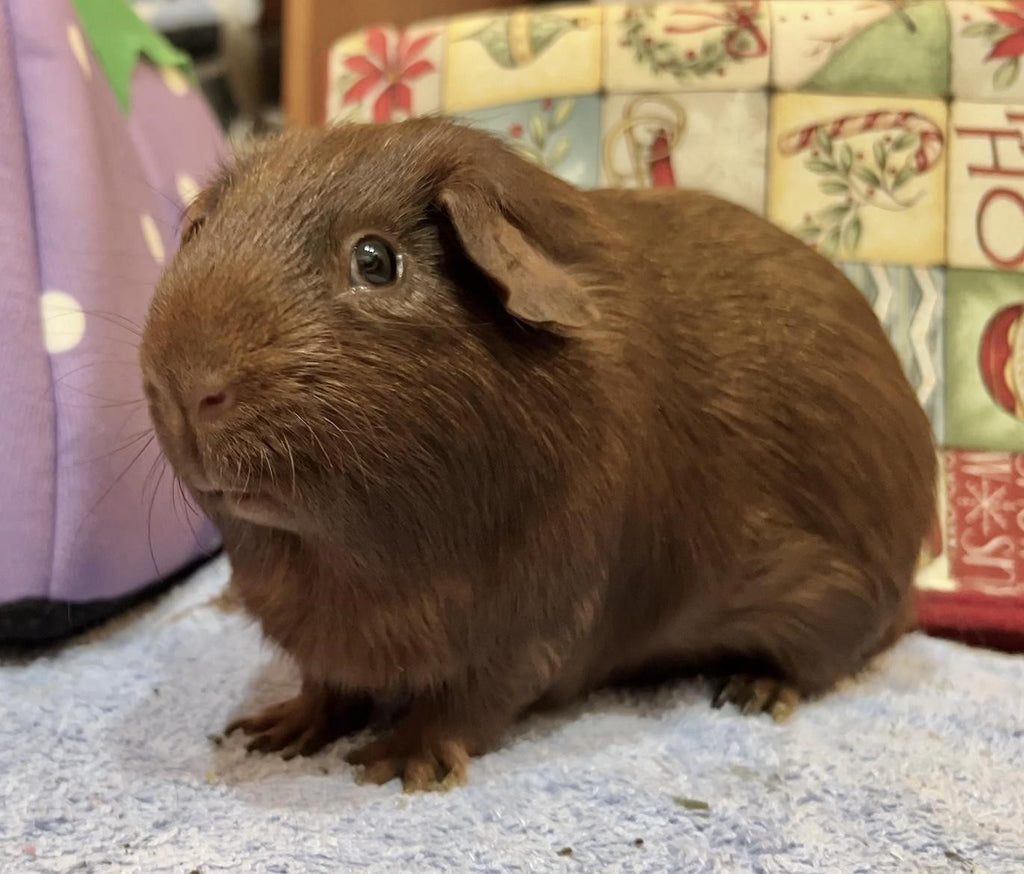Essential Guide to Oswald the Lucky Rabbit in 2025
Oswald the Lucky Rabbit is a pivotal figure in animation history, representing a bridge between the silent film era and the evolution of modern cartoons. Initially created in 1927, Oswald not only gained popularity through his charming character but also paved the way for the Disney legacy that we recognize today. In this exploration of Oswald's adventures and contributions, we will delve into the history of this iconic character, examining his influence on animation storytelling and the evolution of 1920s cinema.
As we journey through the various aspects of Oswald's legacy, we'll uncover his unique character design, the significance of silent animation techniques, and how he compares with other legendary figures like Mickey Mouse. The revival of Oswald's character in recent years showcases the enduring appeal of vintage animations and the culture surrounding them. With a focus on Oswald merchandise and animated shorts, we'll reveal why this forgotten character deserves a prominent place in animation history.
Additionally, we’ll touch on the impact of Oswald on today's animated culture, highlighting his role in various forms of media and merchandising. By understanding Oswald's character traits and the broader trends in animation, we can appreciate the complexities buried within this joyful rabbit's journey.
Key takeaways from this guide include an overview of Oswald's journey through the ages, a detailed analysis of his character traits, and insights into his lasting impact on the world of animation. Join us as we celebrate the legacy of Oswald the Lucky Rabbit and explore how he continues to inspire animated storytelling in 2025 and beyond.
Understanding Oswald: Character Traits and Design
Building on Oswald's charm, we first need to explore the character traits that define him. Oswald exhibits several classic characteristics seen in many anthropomorphic animals: cheerfulness, mischief, and resilience. His design, featuring large ears and expressive facial features, allows for broad emotional expression, making him relatable to audiences today. It is interesting to note how Oswald's character design parallels other popular cartoon characters, highlighting the common archetypes in animation history.
What makes Oswald particularly fascinating is his role as a precursor to Mickey Mouse, showcasing a transition in character design philosophies. Unlike Mickey's more polished and commercially appealing design, Oswald retains a scruffy charm that harks back to the simpler, silent film style of animation. This distinction plays a critical role in understanding character evolution within the Disney framework and beyond.
Combining classic cartoon influences with humorous storytelling strategies, Oswald embodies the spirit of early animation. His antics present a captivating view into the evolution of animated comedy, providing a template for character interactions that resonate throughout generations. For example, Oswald frequently finds himself in slapstick scenarios, allowing audiences to witness the humor that defined 1920s animation techniques.
Furthermore, Oswald's screen presence offers valuable insights into early character recognition in animation. Despite being overshadowed by later characters, Oswald’s early adventures demonstrate principles of animated storytelling that continue to influence modern animations.
Having established the foundational traits of Oswald, it's evident that the character's development wasn't only about visual storytelling. This leads us to explore the broader culture surrounding Oswald's adventures and his influence on the popular animation landscape.
The Cultural Significance of Oswald's Adventures
Oswald's stories serve not only as entertainment but also reflect societal attitudes and cultural shifts of the 1920s. These animated shorts showcase themes ranging from mischief to adventure, mirroring the explorative spirit of the period.
An essential milestone in animation history, Oswald's films often include humor that resonates across different age groups and backgrounds. By analyzing these shorts, one can see how early filmmakers employed visual narrative techniques to engage audiences—elements still prevalent in today's storytelling frameworks.
Moreover, Oswald's adventures often feature humor that aligns with silent film characteristics, cleverly using expression over dialogue to convey emotions and plots. This approach not only enhances comedic elements but also paints a vivid picture of the challenges early animation studios faced in engaging their audiences.
The significance of Oswald's character is further emphasized through merchandise and adaptations—keys to understanding how a character transitions from screen to merchandise. This evolution highlights the importance of character licensing and marketing strategies in establishing a lasting legacy for animated characters. Oswald's merchandise, from toys to clothing, continues to revive his image and introduces him to new generations, representing a crucial part of the Oswald franchise's revitalization.

Oswald's Influence on Modern Animation
Looking at Oswald’s journey, it’s clear how his development and revival have profoundly influenced modern animation techniques. Not only do contemporary animators draw inspiration from Oswald's character design and storytelling methods, but they also recognize the importance of humor in engaging audiences. Animators today often study vintage characters like Oswald to understand character dynamics and motif relevance.
The transition from Oswald to Mickey Mouse is an important point in animation history, illustrating a shift in character popularity and commercial viability. By dissecting both characters, we can fathom how storytelling in animation evolved, particularly in terms of rhythmic timing and emotional connection. The success of characters like Mickey can be traced back to the foundational traits and storytelling methods explored through Oswald's adventures.
Additionally, Oswald's enduring popularity showcases how animated characters can become cultural icons, fostering a dedicated fanbase that persists across decades. The love for vintage cartoons has sparked interest in the significance of early animation, allowing characters like Oswald to remain relevant in today's media landscape. The revival of interest in forgotten characters emphasizes the nostalgia associated with classic animations, which adds layers to audience experiences and expectations.
In this section, we see how the legacy of Oswald influences animation market trends and character recognition. As this connection between past and present solidifies, it naturally leads us to explore more about animation classisms and how they complement Oswald’s legacy.
Animation Techniques and Evolution in the 1920s
The animation techniques used for Oswald's cartoons are a testament to the craftsmanship of early animation studios. Unlike today's digital mediums, early animations relied heavily on hand-drawn frames and intricate silent animation techniques, presenting unique challenges and milestones in animation craftsmanship. This hands-on approach allowed for diverse storytelling methods that engaged viewers in an era of burgeoning visual arts.
The impact of 1920s animation trends is crucial for understanding Oswald's artistic representation. By examining the evolution of animation styles during this period, we gain insights into how various storytelling frameworks derived from silent films amalgamated, culminating in the elaborate cartoon scenes characteristic of Oswald's films.
Oswald embodies the humor and charm of his era, indicating how laughter was constructed through physical gags and visual jokes. This legacy is reflected through modern cartoons, where the principle of giggles often intertwines with narrative progression. Furthermore, by understanding vintage storylines and character journeys, we can appreciate the influences on future characters embraced by the animation industry.
As we prepare to delve further into cartoon character comparisons, we will also recognize the significant power of nostalgia in storytelling, highlighting how famous figures from the silent film era shaped audiences' perceptions of modern animations.

Cartoon Character Comparisons: Oswald and His Peers
In comparing Oswald the Lucky Rabbit with other vintage characters, such as Felix the Cat or even early iterations of Mickey Mouse, we can see the nuances that characterize early animation. These comparisons allow for a deeper understanding of animation history, illustrating how character traits and storytelling methods evolved across time.
Oswald's charm lies in his adventurous spirit, contrasting with Felix's more mischievous personality. While both characters share commonalities—like the portrayal of anthropomorphic rabbits—their stories reflect different comedic styles and narrative trends. For instance, when juxtaposing Oswald with Mickey Mouse, we see a transition from the carefree adventures of early animation to a more structured and commercially viable approach, showcasing a significant character transition.
Moreover, these character analyses highlight how character dynamics and emotional connections contribute to audience identification. By understanding Oswald's evolution, we can see the foundations laid for modern cartoon character archetypes, which resonate with viewers even decades later. This ongoing interest in character traits illustrates the impact of vintage animation on the storytelling methods of current animators, echoing themes relevant to contemporary audiences.
This analysis of character comparisons propels us to understand nostalgic elements in animation, focusing on the cultural significance of rabbit characters in animation history. The charming traits of these animated rabbits enhance audience emotions, reflecting societal sentiments of the time and enhancing narrative structures.
Nostalgia and Cultural Significance of Rabbit Characters
Rabbits have long been a staple in animation, often embodying characteristics associated with innocence and whimsy. Oswald, as one of the earliest iconic rabbit characters, illustrates how such traits can amplify audience engagement, creating memorable moments in animated history. By exploring the cultural significance of rabbits in media, we uncover the psychological factors that contribute to audience loyalty toward animated characters.
Nostalgia serves as a powerful tool, enabling characters like Oswald to endure in modern media. Viewers often find comfort in revisiting beloved characters, leading to renewed interest in classic animations and characters. This phenomenon examines how modern adaptations and merchandise resonate with previous generations while introducing a new audience to historical cartoons.
Discussing the legacy of rabbits in animation also opens the door to character licensing considerations, demonstrating the importance of strategic partnerships in reviving characters like Oswald. Merchandise related to classic animations is crucial for maintaining their cultural relevance and illustrating the ongoing relationship between viewers and beloved characters.
In this regard, Oswald's legacy encapsulates a broader narrative about forgotten characters and the significance of animation culture across decades. His story highlights the facile relationship between animation storytelling and the commercialization that has defined much of the animation industry post-1920s.
With these key insights into Oswald's character traits, narrative journeys, and cultural significance, we can transition into our concluding section examining the legacy of Oswald the Lucky Rabbit and the ongoing revival of vintage characters.
The Legacy of Oswald the Lucky Rabbit
As we wrap up our exploration, it is essential to acknowledge the enduring influence of Oswald the Lucky Rabbit within the animation industry. His unique character traits and storytelling methods have carved a niche in animation history, providing a foundational framework extending far beyond his era.
The revival of interest in Oswald through modern adaptations and merchandise confirms how beloved he is among animation fans. This resurgence underscores the importance of preserving lost animation history and its impact on current creators. Future generations can learn from Oswald's legacy, forging connections to vintage animations and pulling from the well of character traits that shaped many modern icons.
Moreover, Oswald’s misadventures reflect the joys and journeys many characters undertake throughout their narratives. As a timeless character, he encapsulates the essence of vintage animation and its cultural significance, aligning with the broader audience experiences that resonate through contemporary animated storytelling.
In closing, Oswald the Lucky Rabbit reigns as an essential figure in the tapestry of animation history, representing the charm of the 1920s while engaging audiences today and tomorrow. As we look forward to the continued revival of characters from animation’s past, one can only hope Oswald maintains his place as a beloved classic that inspires future generations.
For fans and newcomers alike, Oswald remains a treasured representative of laughter, nostalgia, and storytelling—a reminder of the charm found in vintage cartoons.
With the knowledge of Oswald’s journeys and cultural impact, we can appreciate how historical figures in animation help shape the animation landscape we enjoy today.
